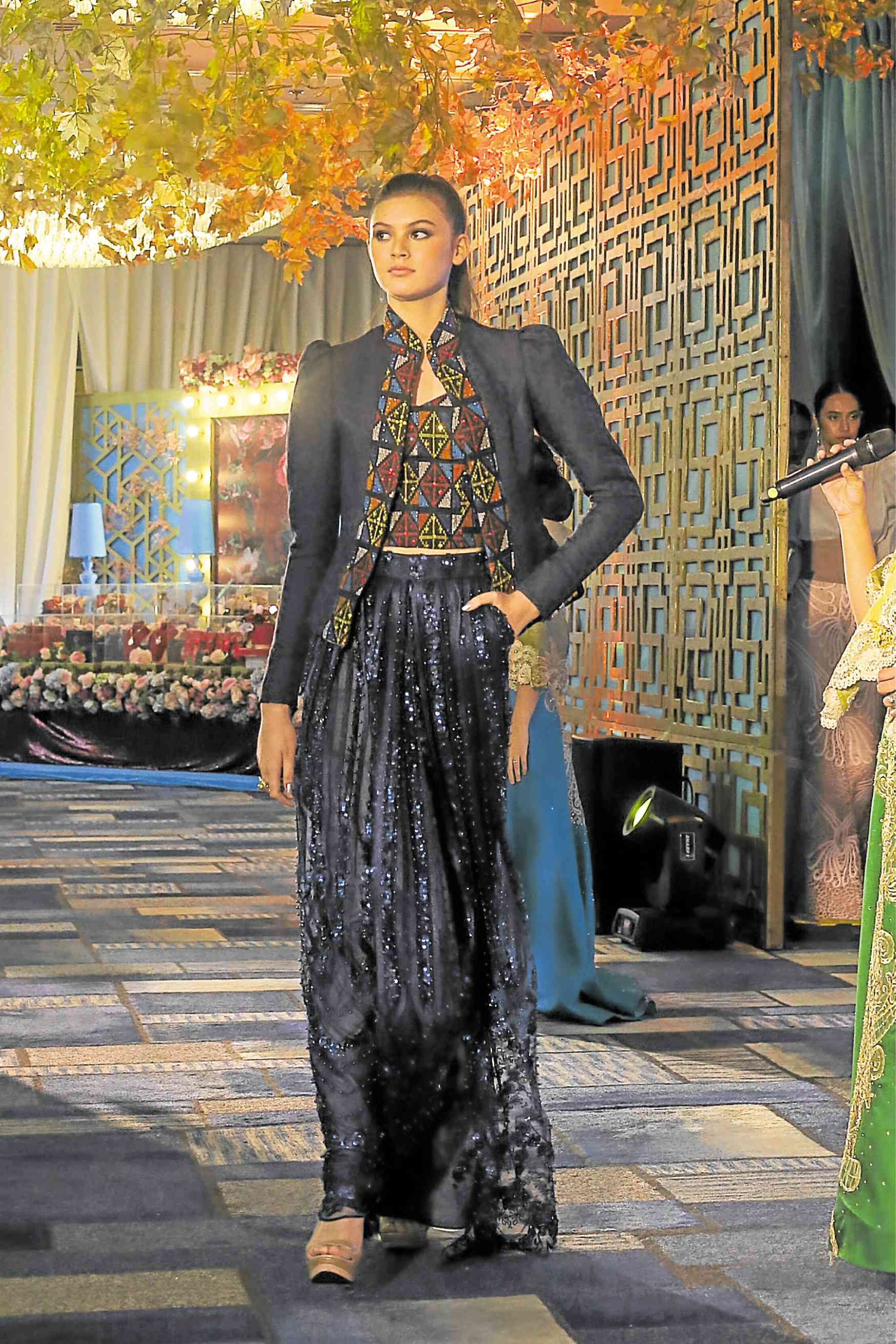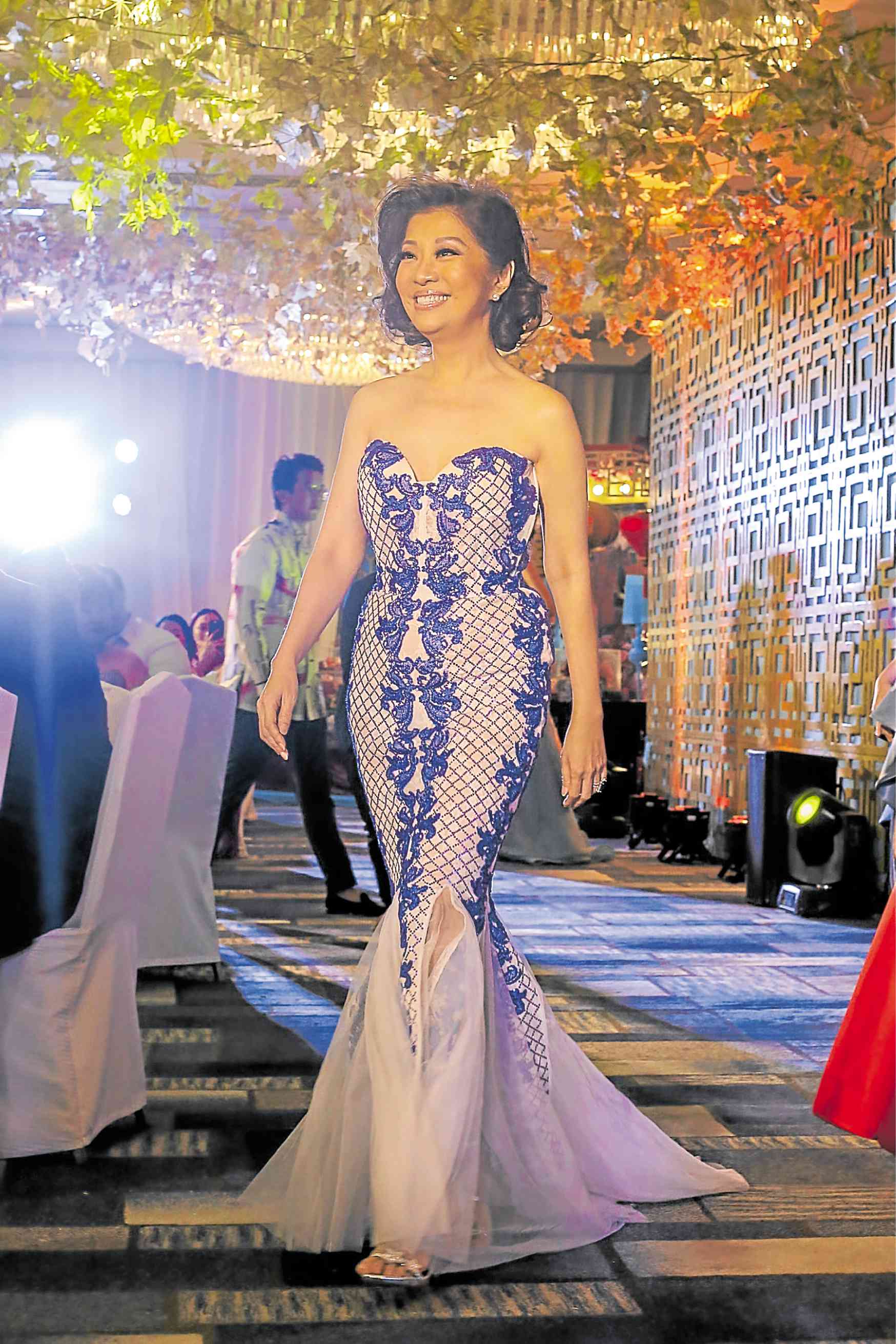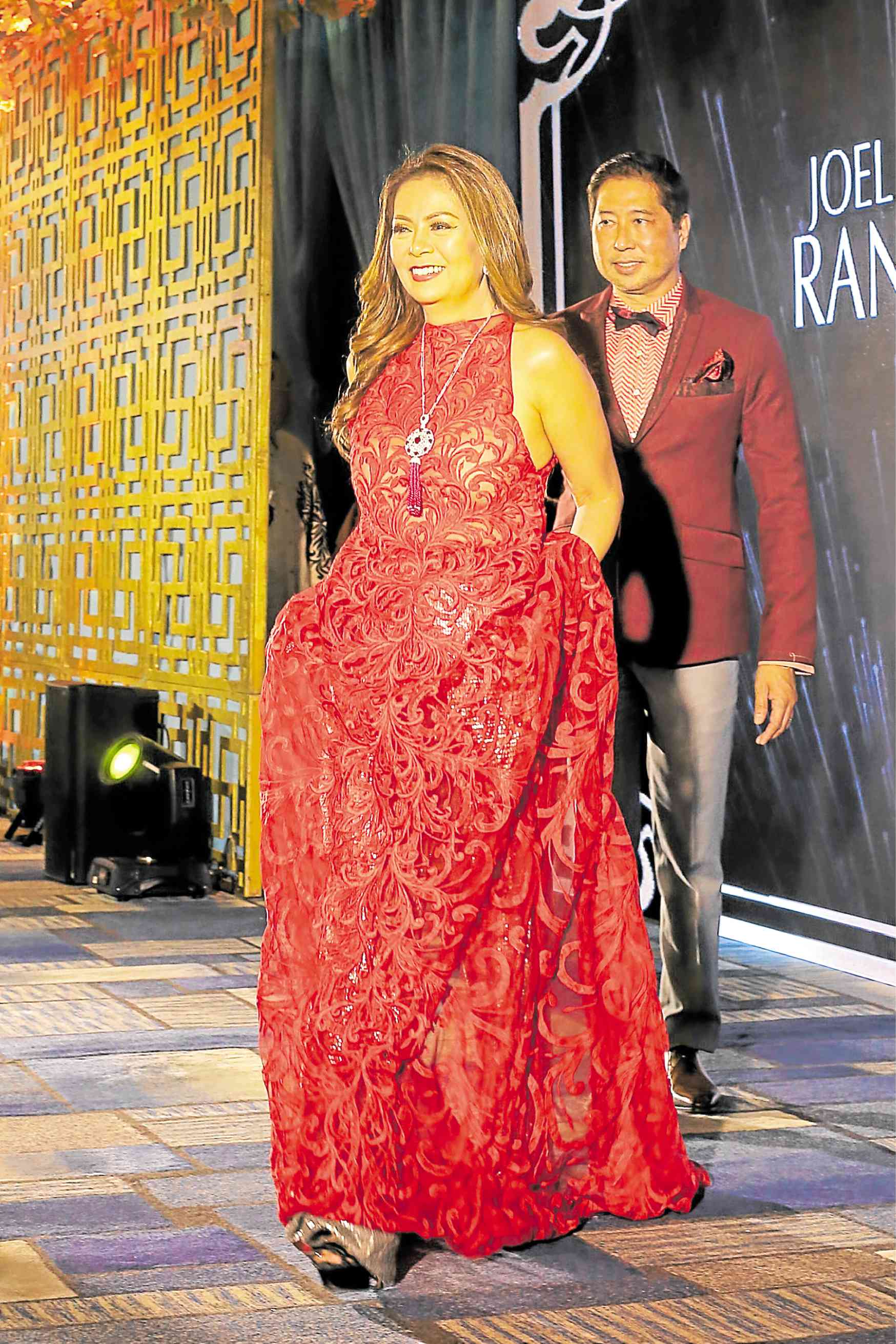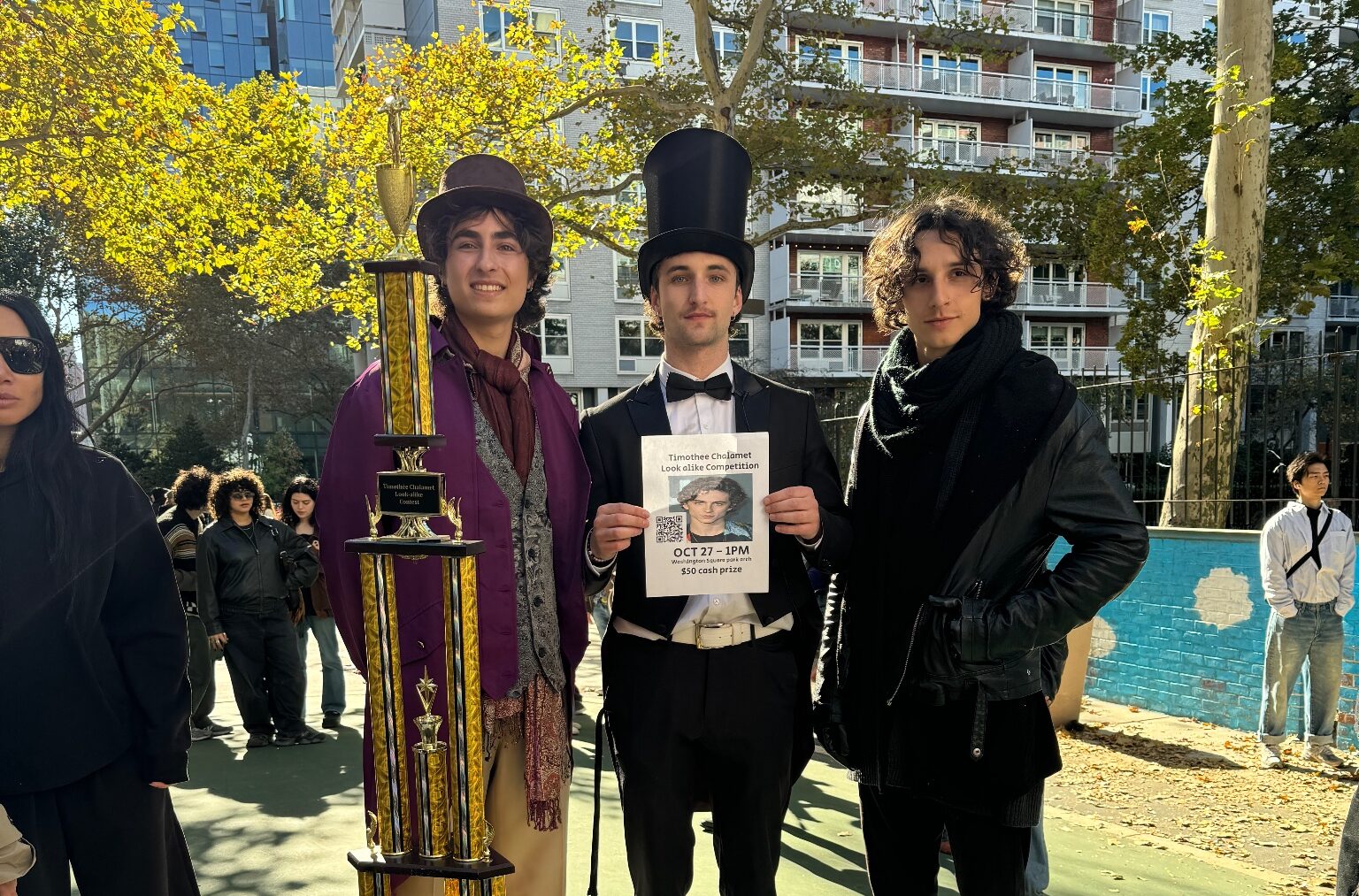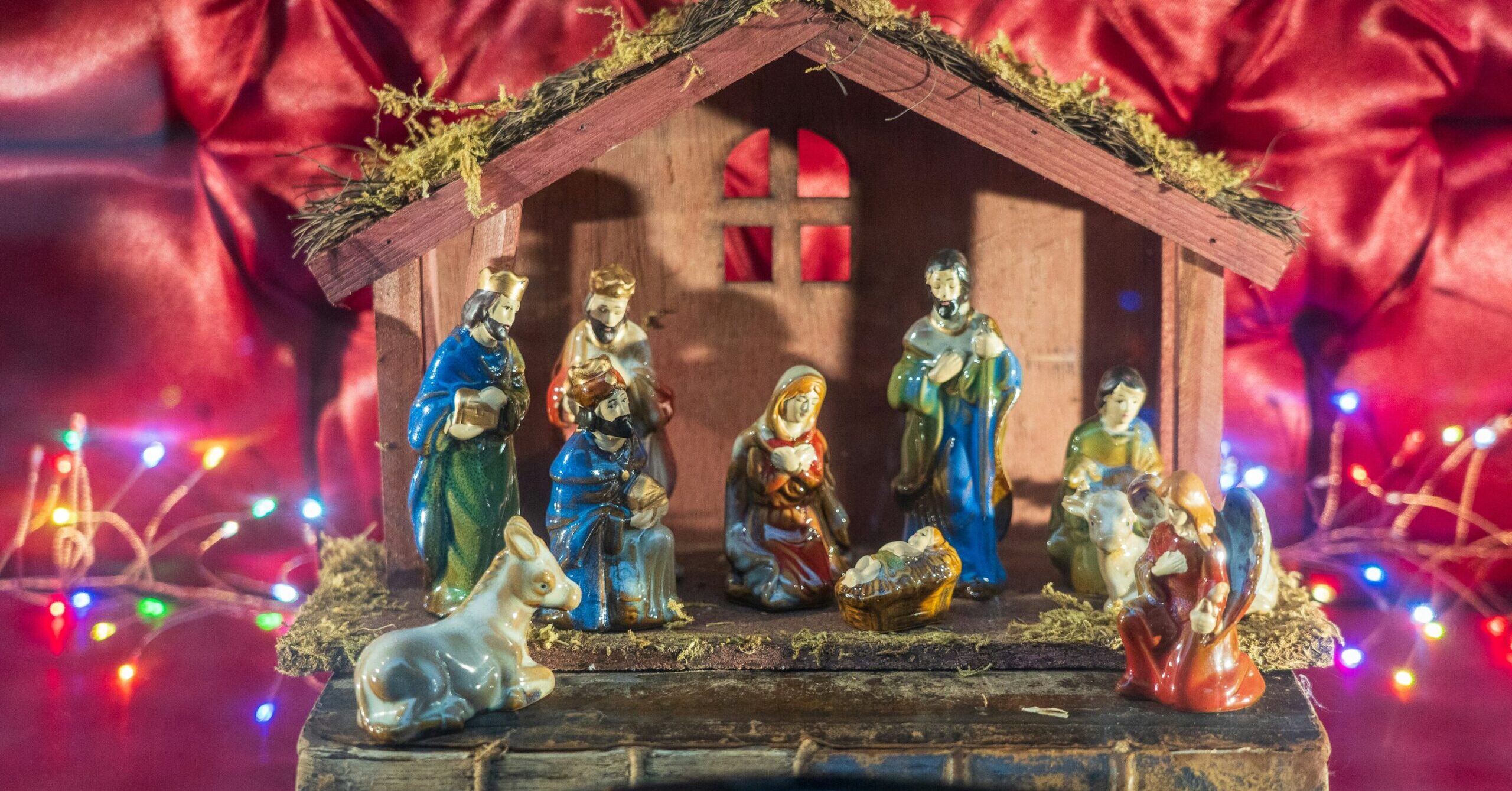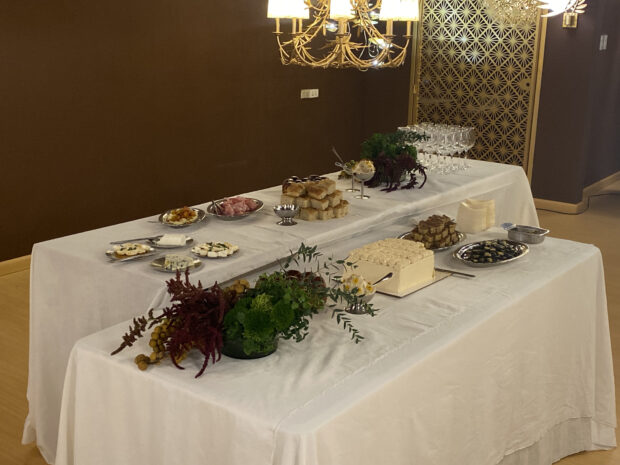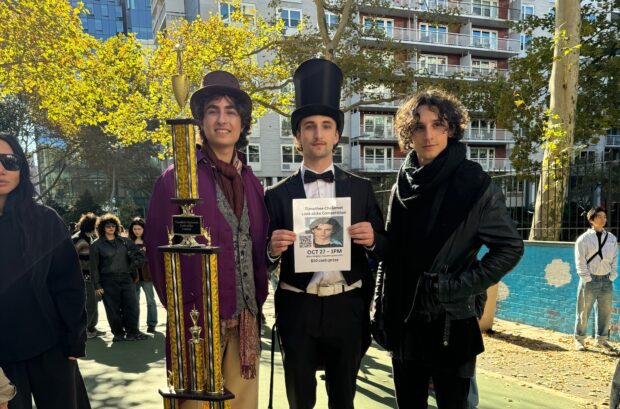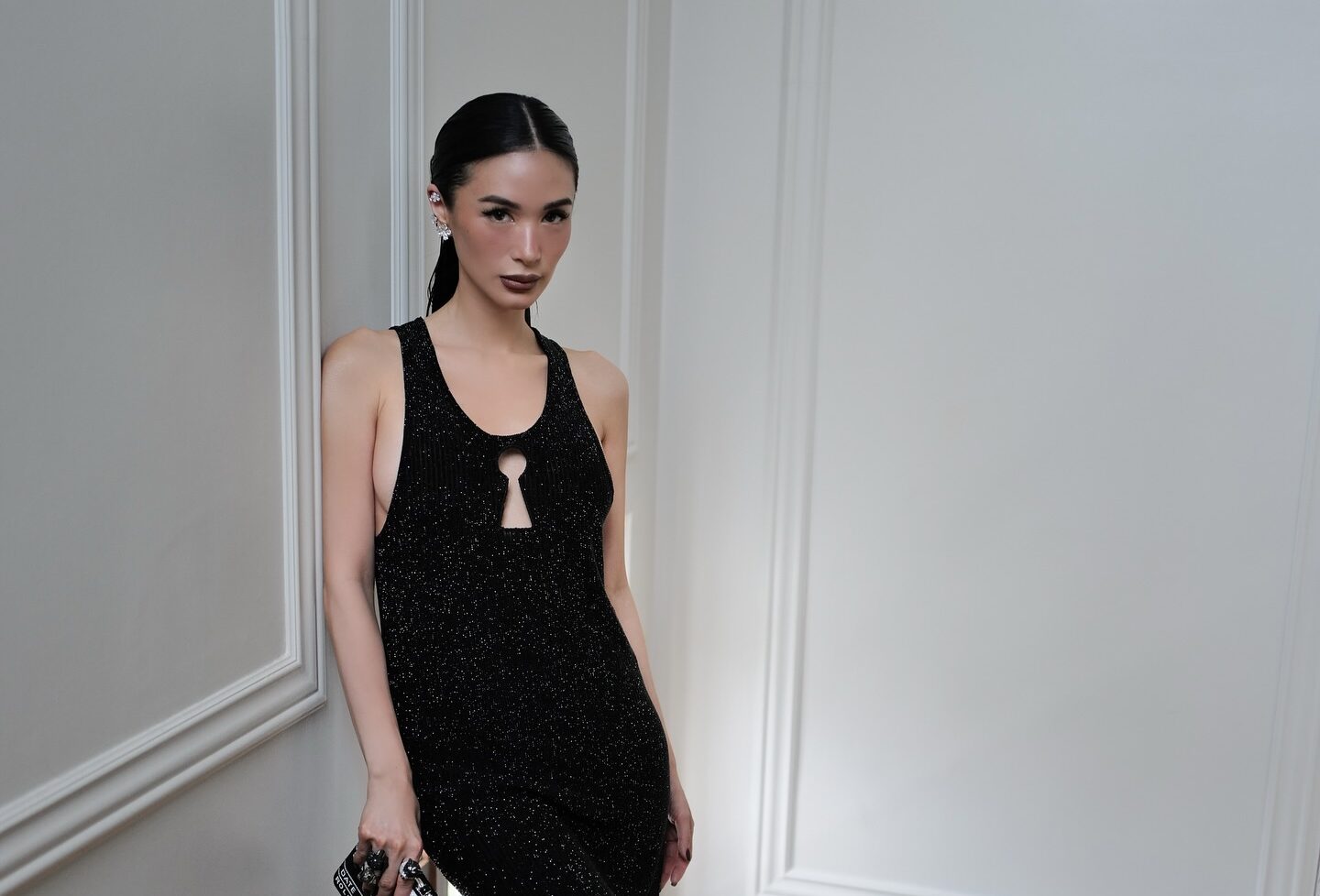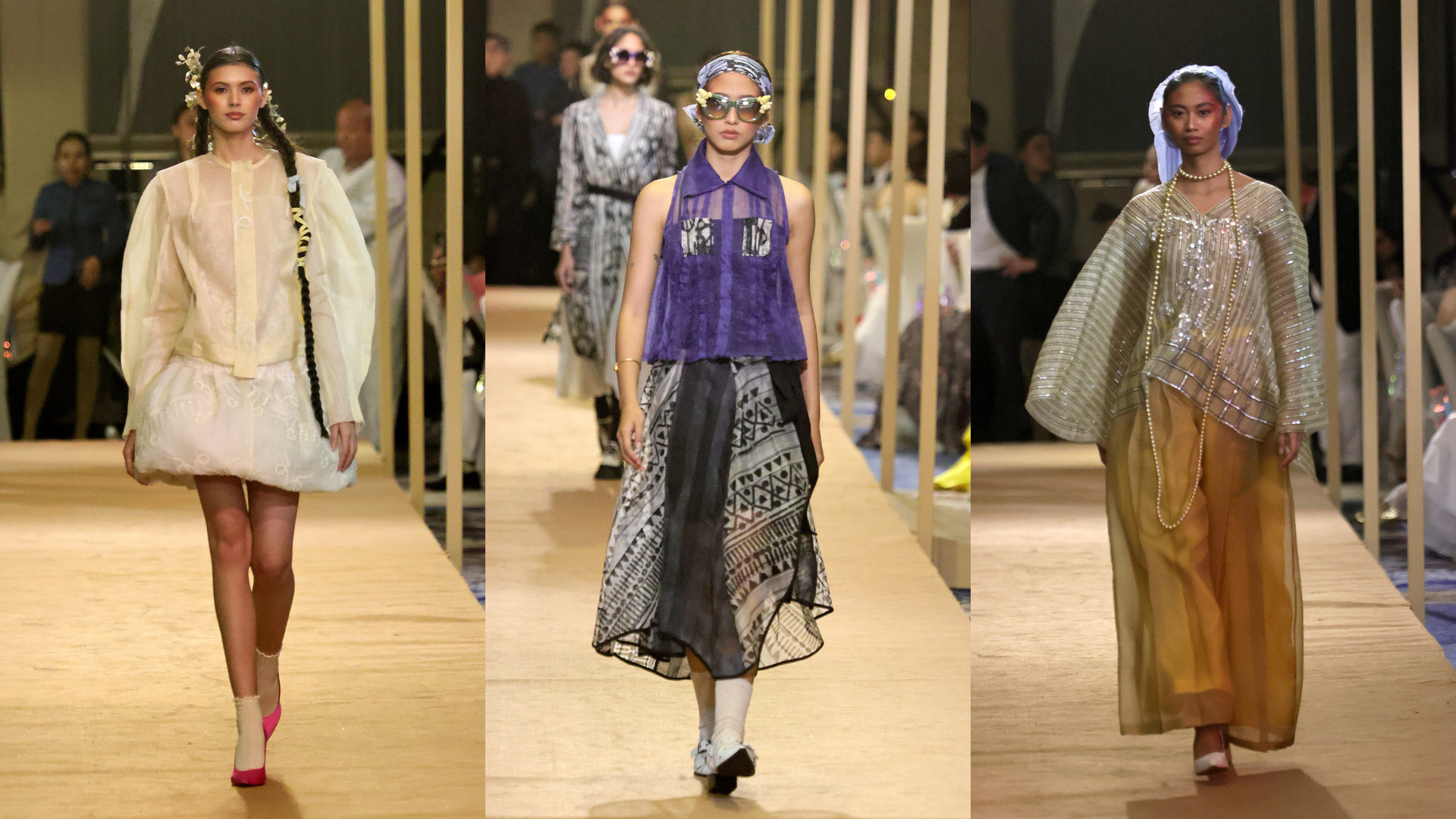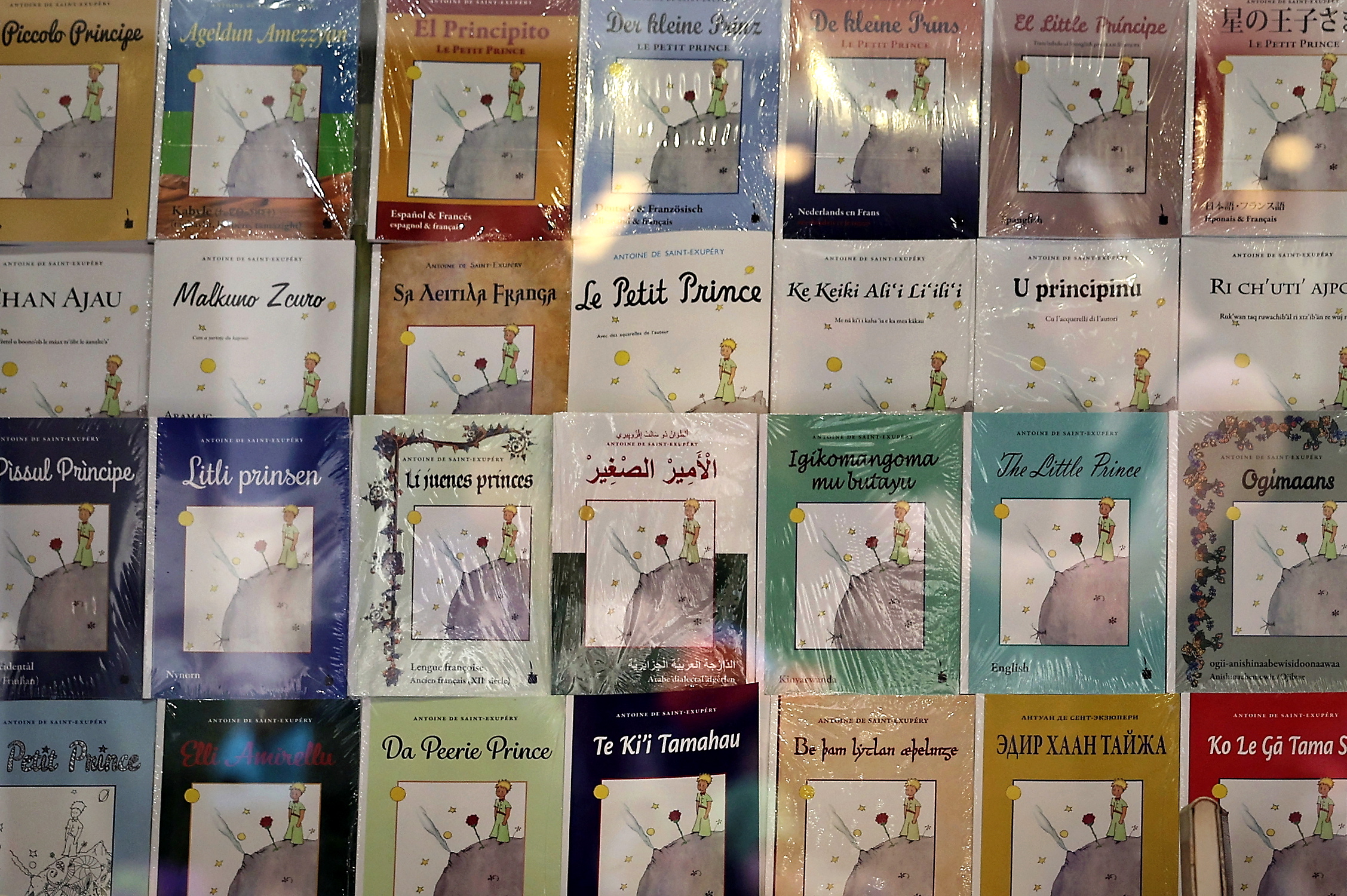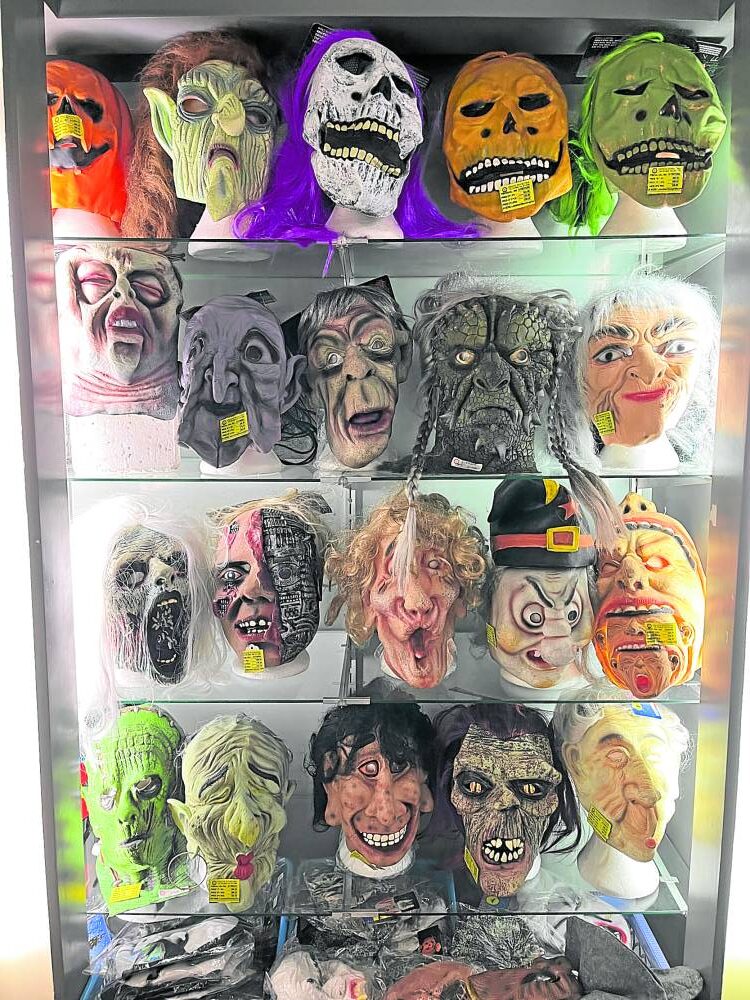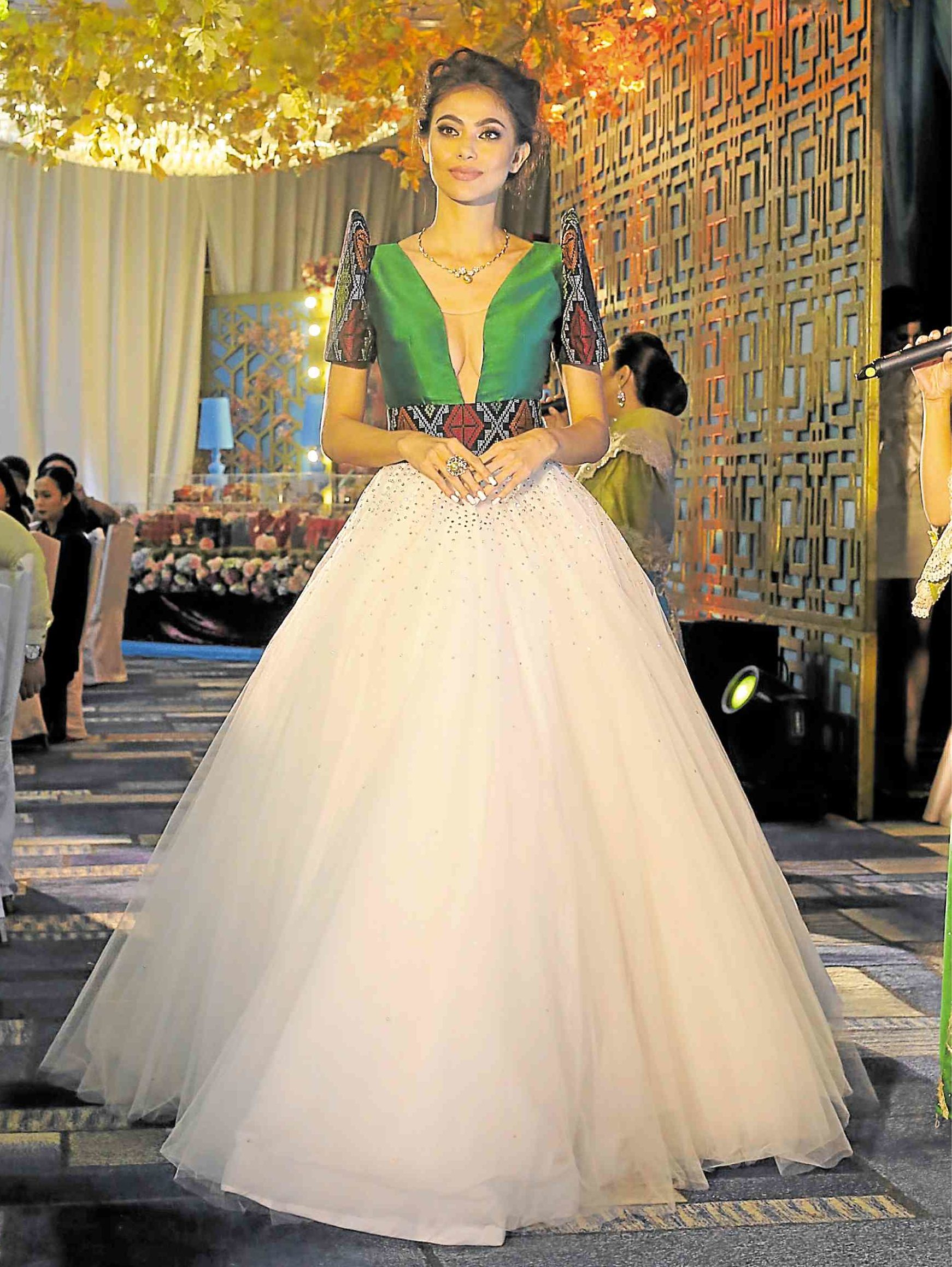
On its 12th year, Asian Dragon (AD), the only English magazine with Chinese translation, produced a dinner-fashion show at Isabela Ballroom at Makati Shangri-La, echoing the nationalistic surge that had swept through the Philippine fashion scene in the past few years.
Olive Limpe-Aw, publisher of AD and president of Destileria Limtuaco, proudly wore an off-shoulder piña gown.
Co-organizer Makati Shangri-La was billing itself as the Chinese-Filipino community’s venue of choice for ting hun engagement parties, birthdays, anniversaries, weddings and receptions.
Ten designers created their collections around those themes, in a show directed by Jackie Aquino. The finale was a tribute to indigenous weaves provided by Habi: The Philippine Textile Council.
For the designers, red was the obvious choice for what to wear in a ting hun and other milestone events, because it symbolizes good fortune and happiness.
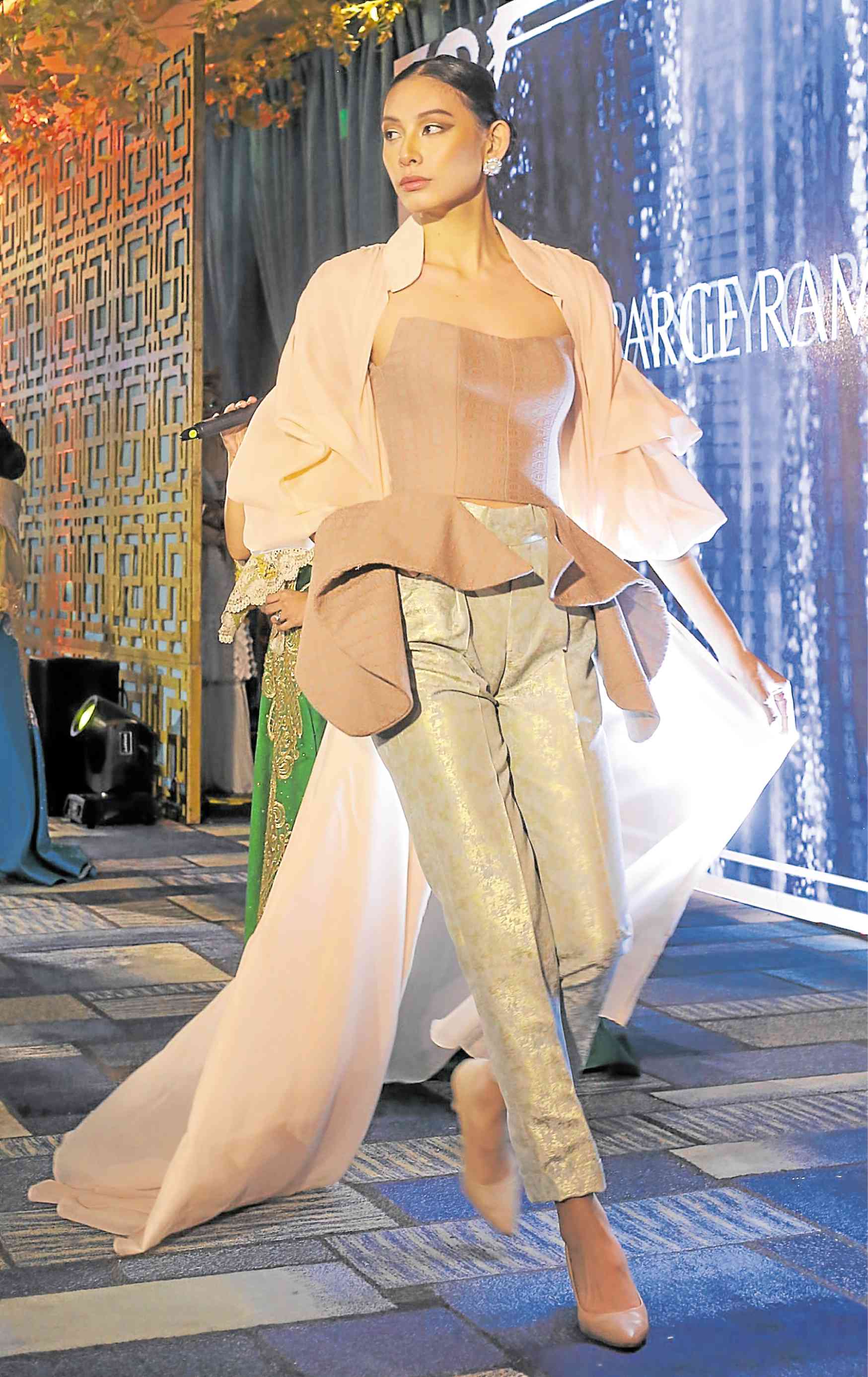
Designers also favored silk gazar: Albert Andrada’s ball gown with a bodice encrusted with beads and crystals; Jerome Ang Salaya’s off-the-shoulder gown with silk feathers; and JC Buendia’s cowl-neck long dress.
Debbie Co created a brocade strapless dress with ruffles on the chest and hemline.
Randy Ortiz’s muse Joy Rustia sashayed in a carnelian embroidered tunic, while her husband Joel looked dapper in a burgundy suit and gray pants.
Barge Ramos’ ladies’ wear was a floor-length embroidered jusi barong tunic dyed red, with black bell bottoms accentuated by Yakan patterns.
Then there were Buendia’s rose-red brocade dress with the circle skirt of an 11-year-old; Renée Salud’s salmon silk shirt, red sash and ruffled fuchsia skirt; and Co’s red frou-frou dress.
Modeled by muse Salome Uy, Cherry Veric’s homage to China was a white lace gown with blue appliqués that was a reference to Ming blue and white pottery. His other muse, Tessa Prieto Valdes, strutted in a structured organza ball gown, resplendent with fabric flowers in hot pinks and reds.
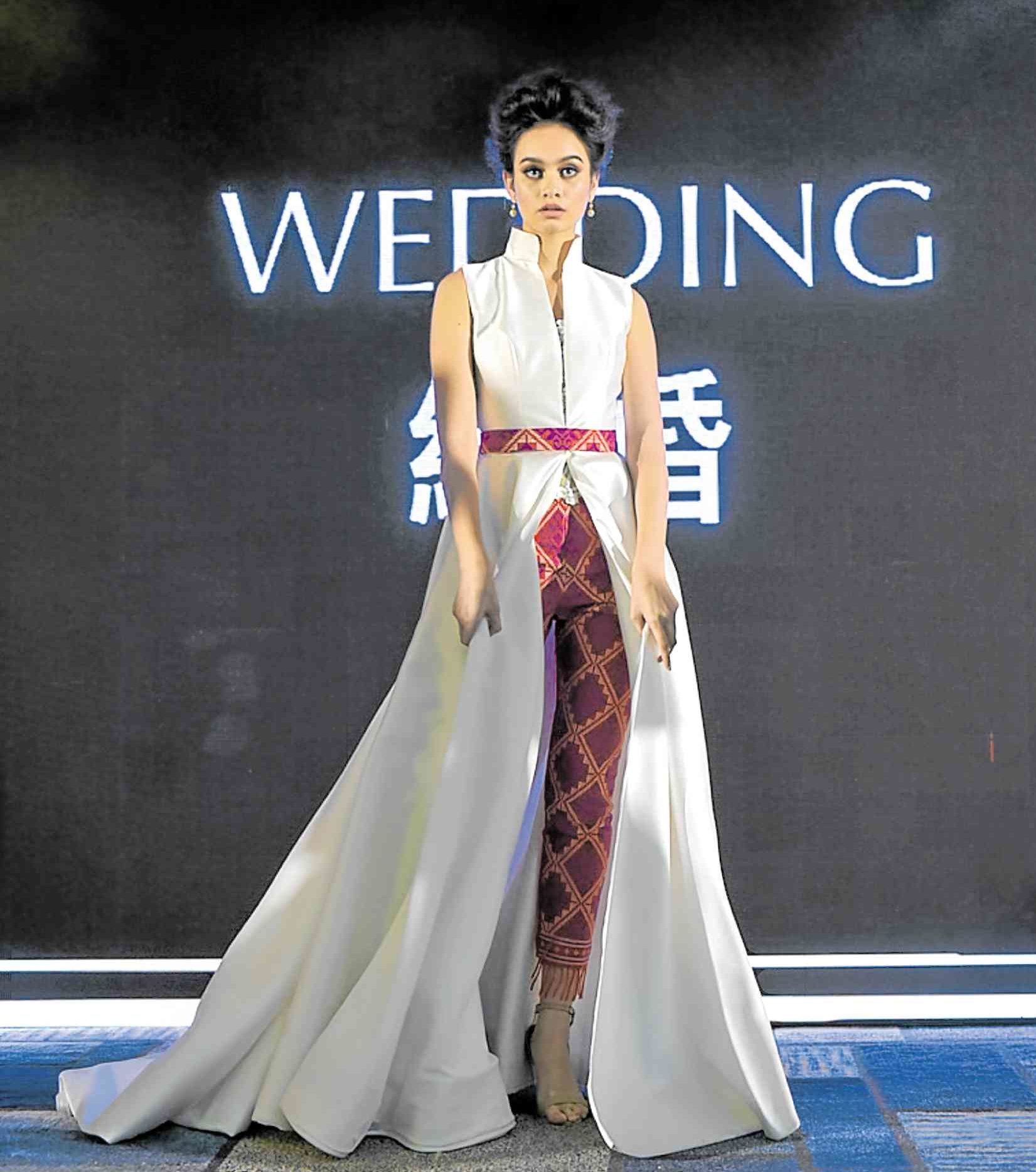
Modern use
The show highlighted the modern uses of Philippine weaves.
Andrada’s recommended apparel for the wedding guest was a sleeveless opera coat worn over a bustier and Yakan-patterned pants. His Filipiniana was a terno with an emerald green bodice and Yakan butterfly sleeves and belt, and a voluminous white tulle skirt.
Ramos has been synonymous with the graphic barong. Benny Aw, senior vice president of Destileria Limtuaco, paraded in an ecru piña barong with handpainted foliage patterns, while his son Brandon’s barong was painted with bamboo patterns.
Ramos’ contemporary version of the barong was a gray number with airbrushed abstractions and a double Mandarin and tuxedo collar.
Frankie de Leon’s midnight blue brocade evening suit looked sharp with Yakan fabric on the jacket border and on the bandeau top.
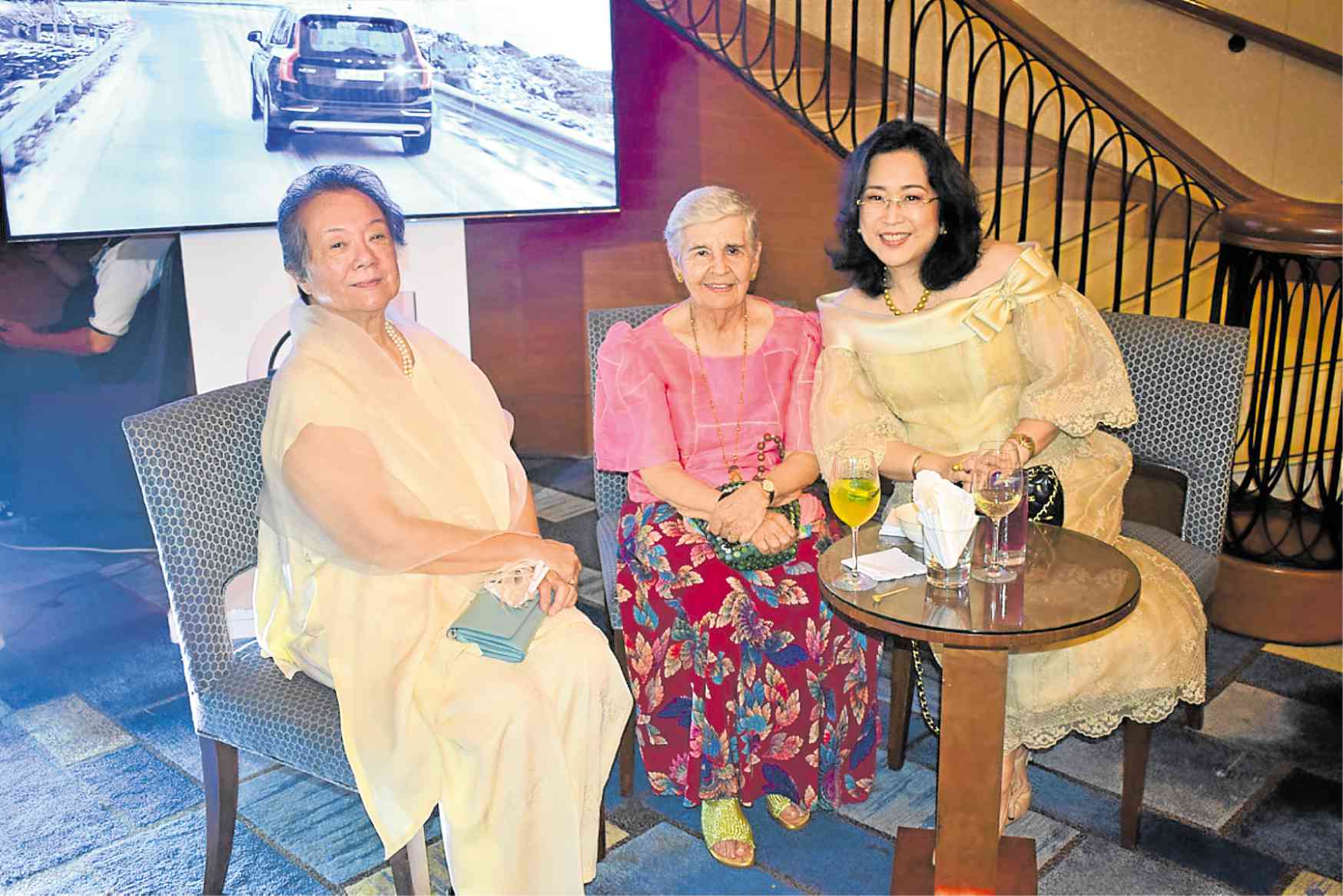
Ortiz combined East and West by mixing inabel Iloko corset and a piña top with a brocade skirt in blush pink.
Designers had their take on the piña.
Buendia went traditional through a piña terno with a Mountain Province striped tapis (overskirt) in modern colors. Ortiz’s take was a piña robe over brocade pants.
Veric’s sheer barong dress conveyed both inner and outer wear. Out of modesty, the dress was sewn with a slip while the top was layered with an exposed corset.
Salud presented his signature barong tunic dress in gray, embellished with crystals. His modern Filipiniana was a Maria Clara-inspired piña cutaway overcoat over a matching jumpsuit. Co’s mini dress emphasized the profusion of fabric flowers.
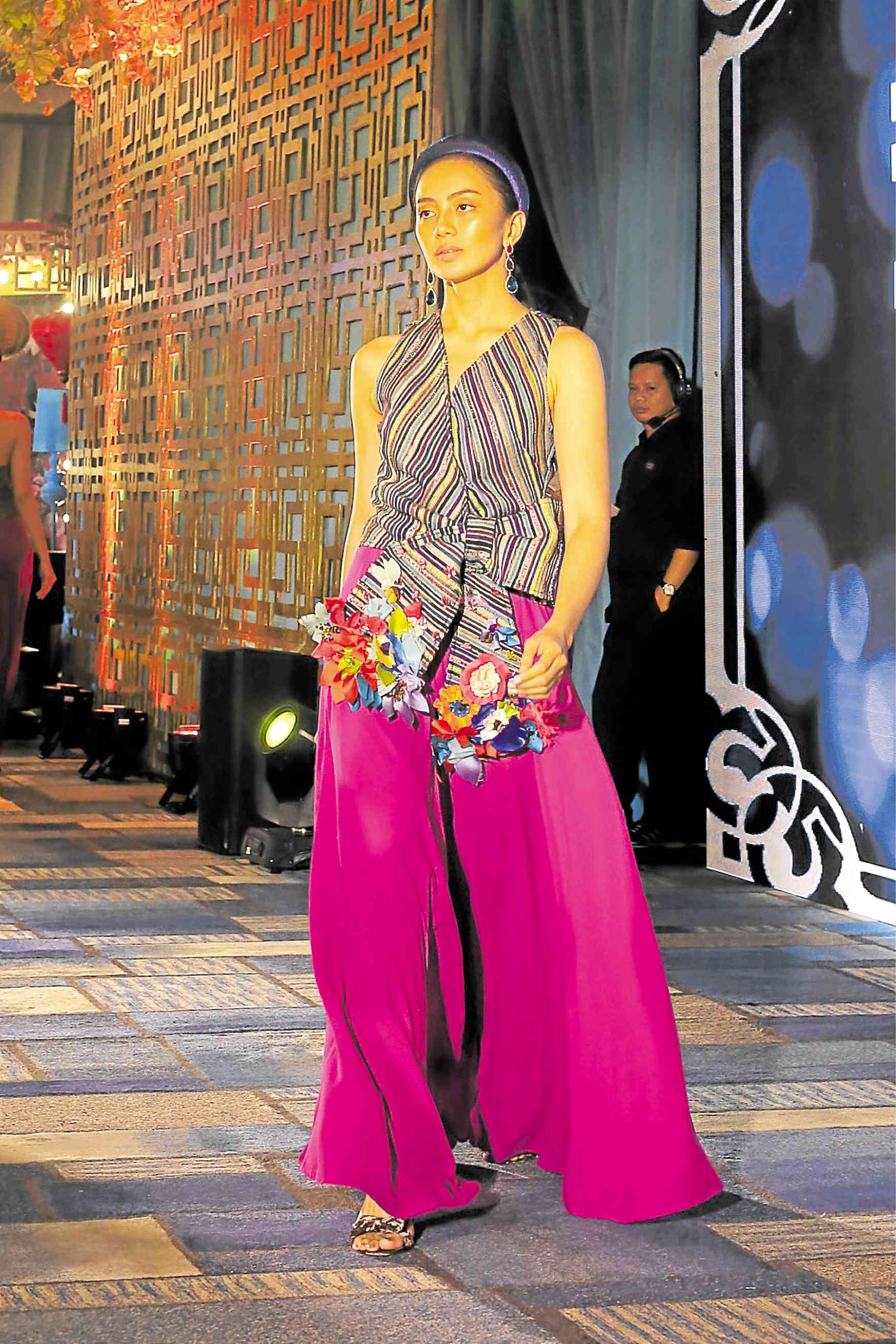
Francis Libiran’s pocket collection for Bayo consisted of variations of how to use printed, pleated trims and tops—all made from industrial excesses.
“The sustainable fashion aspect is the reduction of textile wastes by transforming the fabric scraps into reusable fabrics or items,” said Libiran in an email interview.
“The upcycled weaves are turned into stylish and wearable clothing,” he said. “The collaboration called Francis Libiran X Bayo introduces consumers to fashions that are not only worn for cultural purposes, but also for everyday living. It plays with the combination of different colors and patterns that resemble Philippine textiles rendered in modern silhouettes.”
In her speech, Limpe-Aw underscored that the event wasn’t just a fashion show and a lauriat. “Our mission is to bring ethnic communities and Philippine handwoven textiles to mainstream fashion to help create consistent demand and patriotism.”—CONTRIBUTED
